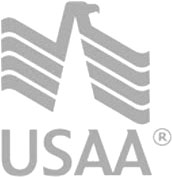Have you ever stopped to consider what all that stuff on your credit card is? There are names, numbers, dates, a magnetic strip, and even a hologram. Here's a breakdown of what all of that means:
FRONT OF THE CARD
Credit card issuer - Somewhere on the front of your credit card is the name and/or logo of the company that issued your credit card. It may be American Express, Bank of America, another nationwide corporation, or a local bank or credit union.
Payment processing company - Also on the front of your credit card, typically near the end of the account number, will be the name and/or logo of the payment processor of your credit card, such as Visa, MasterCard or American Express.
Issuer identifier - The first six digits of your credit card number identify the issuer of the card and its industry. For example, Visa cards always start with a "4" and American Express cards always start with a "34" or "37."
Account number - The digits after the first six digits of your credit card number, except for the final digit, denote your account number.
Check digit The last digit in the credit card number is called a check digit, or checksum digit, and is used to verify the initial digits of the card number. This makes fraud more difficult and helps to prevent errors. Each issuer has approximately one trillion possible credit card numbers.
Security hologram - Typically located near the end of the account number, the security hologram is a reflective image designed to help prevent fraud because holographic images are difficult to reproduce.
Chip-and-PIN technology - Widely used in many European and Asian countries, Chip-and-PIN cards (sometimes called "smart cards") contain embedded integrated circuits so that you don't swipe your card and sign for your purchase, but rather enter a PIN number. The technology is generally considered to be more secure, but is not prevalent in the United States due to cost (the cards are more expensive to produce, and stores would have to buy new credit card processing hardware). However, some stores, such as Sam's Club and Target, are switching their store-branded credit cards to Chip-and-PIN technology. If your card is equipped with Chip-and-PIN technology, there will be a small gold-plated contact pad or an RFID chip, depending on the type of smart card you have.
BACK OF THE CARD
Magnetic stripe - The magnetic stripe - often called a "magstripe" - on the back of your credit card can hold a lot of information. Generally, the magstripe contains the name of the account holder, the credit card number printed on the front of the card, the expiration date of the card, and any PIN verification number used. There is also a service code that tells retailers how the card may be used (e.g., whether a PIN number is required). The service code is also used by financial institutions to store information regarding their interchange rules and contact procedures.
Signature strip - A credit card generally must be signed in the signature strip located on the back of the card in order to be valid. This allows a merchant to compare the signature on the card to the signature provided in the store for verification and fraud prevention.
Verification code - The three-digit CVV2 code, more commonly known as a verification code, is located at the end of the card number printed on the signature strip of most credit cards. (The code is four digits and located on the front of American Express cards.) The code is a fraud deterrent because it is not stored on the magstripe and cannot be readily obtained or duplicated by someone who does not have physical possession of the card.
Issuer contact information - There is usually a customer service phone number on the back of the card, as well as an address where the card can be mailed if it is found by a Good Samaritan.






















